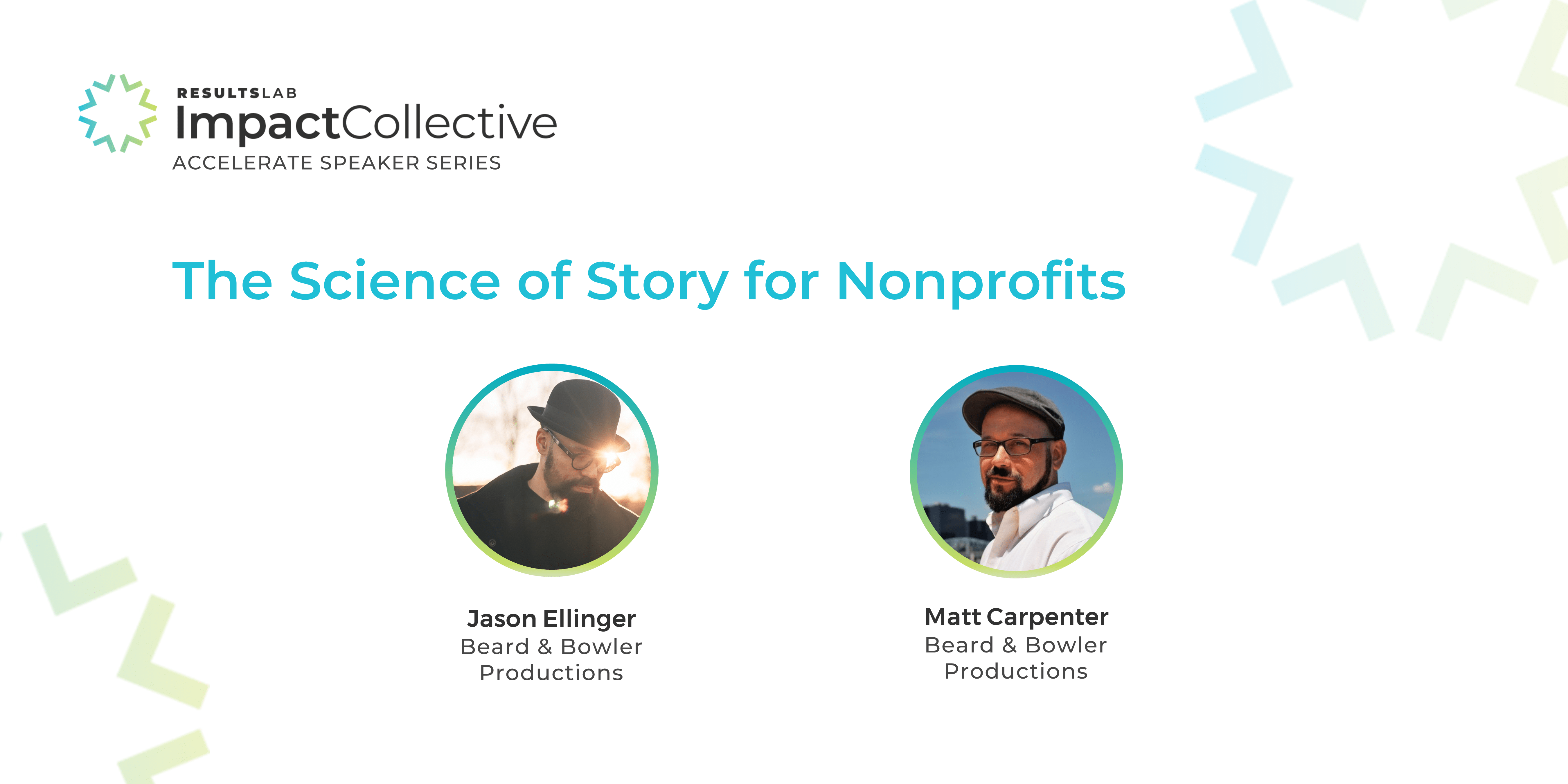Beard & Bowler Co-Founders, Jason Ellinger and Matt Carpenter spoke on storytelling for nonprofits during our Accelerate Speaker Series in ResultsLab’s Impact Collective community.
In this blog post, we share highlights from the session.
In the realm of nonprofit program evaluation, data is an essential tool to inform decision-making and demonstrate your organization’s impact. But data alone is not enough to get you there. While the statistics and facts are important, it’s equally important to be able to communicate the story behind the data. Through data storytelling you can transform data into a coherent and impactful story and bridge the gap between insights and action.
When you think about data storytelling, there are three essential components to consider:
- Data
- Narrative
- Visualizations
In this piece, we are going to dive into the narrative component of data storytelling. If you’d like to learn more about the visualization component, read our blog on data visualization.
A compelling narrative serves as the backbone of your data story. It helps communicate insights gleaned from the data but also contextualizes them within the broader mission and goals of your organization. So how do we construct narratives that move individuals to take action?
Building a Data Narrative with the 7 Elements of Storytelling
Improving your storytelling skills involves understanding and using the seven essential elements of a compelling narrative, which are outlined below. As you think about your data work and the story you are trying to tell, consider how or if you are incorporating each element.
1. Character:
Introduce a main character—the protagonist—who embodies the challenges and aspirations of your audience. Whether it’s a beneficiary of your program or a community member, the character serves as a relatable anchor for your story.
2. Problem
Every compelling story begins with a problem—a challenge that propels the narrative forward and hooks your audience. Identify and articulate the external, internal, or philosophical obstacles that your character faces, drawing your audience into the narrative from the outset.
3. Guide
This is often where your nonprofit can position itself. This is where the character meets a mentor or ally who equips them with the tools and strategies to overcome their challenges. By offering a clear plan for action, nonprofits can guide individuals to become the heroes of their own stories.
4. Plan
Outline a concrete plan of action that addresses the character’s goals and obstacles. Emphasize the importance of decision-making and agency, as the character commits to pursuing a better future.
5. Action
Drive the story forward by depicting the character’s journey of growth and transformation. Highlight pivotal moments where the character takes decisive action, overcoming inertia and embracing change.
6. The Stakes
Illuminate what could possibly happen if no action is taken by the character, if they decide to maintain the status quo and not addressing the underlying challenges they might be facing. This creates tension and urgency by underscoring what’s at risk if the character doesn’t seize the opportunity for change.
7. Resolution
Conclude your story with a sense of resolution and optimism. Celebrate the character’s triumphs and highlight the positive impact of their actions, inspiring your audience to believe in the possibility of change.
Data Storytelling Examples and Takeaways
Here are a couple of examples to help conceptualize what the combination of data, visualization and storytelling can look like. These examples show how you can bring in data and analysis, and narrative flow to engage the audience.
Bussed Out – By the Guardian. A data story of how US cities move thousands of homeless people out of town with one-way bus tickets.
The Physical Traits that Define Men & Women in Literature – By Erin Davis (The Pudding). A data story on how different words are used in literature to describe characters by gender.
Through the lens of storytelling, data ceases to be merely numbers on a spreadsheet—it becomes a powerful tool for advocacy and social change. By harnessing the elements of storytelling outlined above, you can use data to inspire action and drive impact within your organization and beyond.
Recommended Resources:
- Impact Collective (*must be a member to access these resources)
- *Storytelling for Nonprofits Webinar Recording
- *Data to Action Webinar Recording
- *Data Action Planner – a simple and effective tool for defining concrete actions to take based on data learnings.

